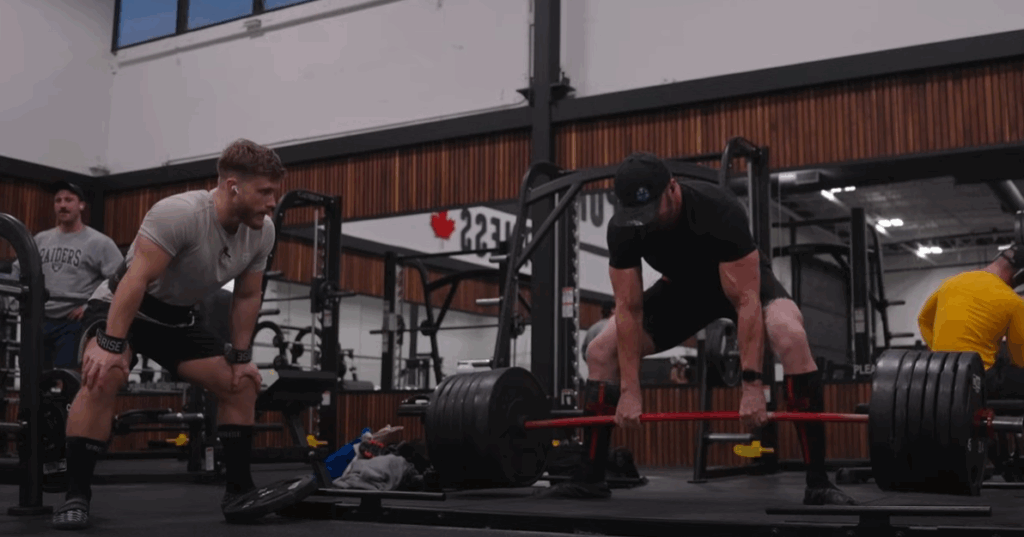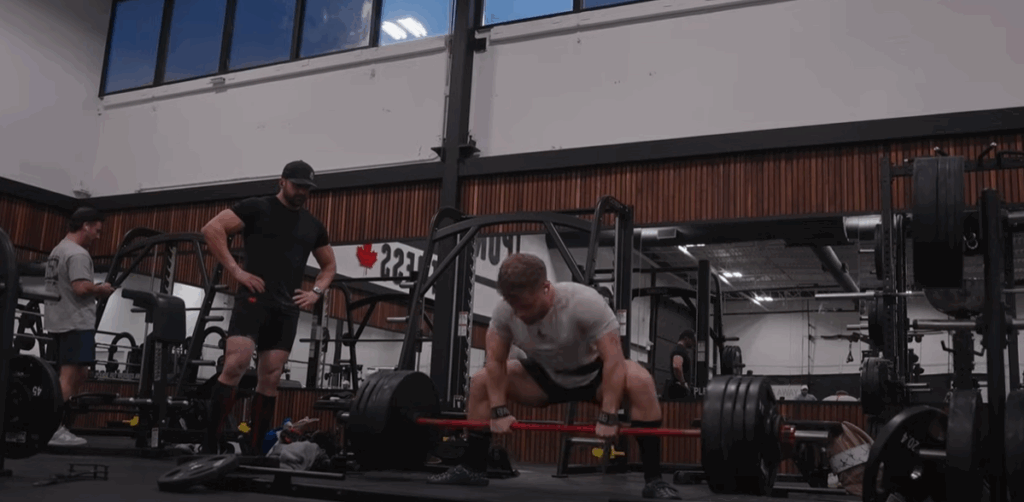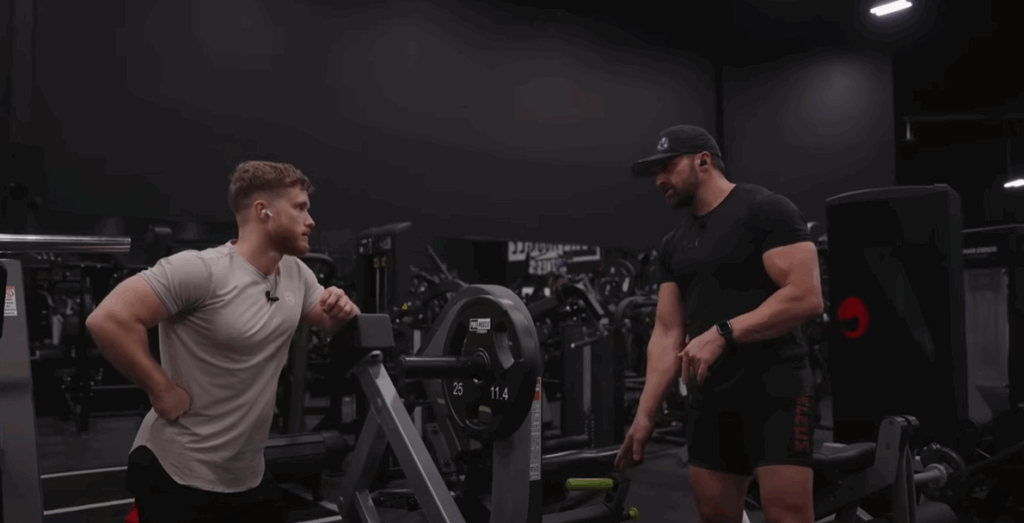ow Science-Driven Training Can Transform Your Leg Workouts: A Behind-the-Scenes Look
When it comes to merging science with sweat, few figures in the fitness world do it better than Dr. Layne Norton—a professional natural bodybuilder, elite powerlifter, and nutritional scientist. In this exclusive training session, we dive into a powerhouse leg day that combines evidence-based principles with raw gym intensity. Whether you’re chasing hypertrophy, strength, or both, this workout provides insights you can apply to maximize your results.
Meeting of the Minds: Science Meets Muscle
This session wasn’t just another trip to the squat rack. It was a chance to train with a mentor who helped reframe outdated fitness myths—like the necessity of “clean eating” or the dangers of cutting water before a competition. Layne was instrumental in showing that flexible dieting can work as long as you meet your macronutrient goals, and that integrating powerlifting and bodybuilding is not only possible but incredibly effective.

Layne’s own accolades include a U.S. national title, a world championship squat of 668 pounds at 205 pounds bodyweight, and decades of myth-busting in the fitness industry. With Layne in the middle of a powerlifting prep, the workout centered around deadlifts, but incorporated enough hypertrophy work to benefit both strength athletes and bodybuilders.
Dynamic Warm-Up: Prepping for Power
Before grabbing heavy weights, the session began with a few mobility drills designed to activate key muscles and loosen up joints. Movements like weighted bird dogs and deep hip openers were used to engage the core and posterior chain.
These aren’t just fancy warm-ups—they help prevent injury and ensure the major movers are firing properly before compound lifts. This approach is especially beneficial for lifters over 30 or those coming back from injury.
Deadlift Work: One Set Can Be Enough
For the primary lift, Layne performed a heavy top set of two reps, working up to a massive 660-pound double. Rather than chasing volume, the goal was quality—one high-effort set executed with technical precision. For lifters short on time or managing fatigue, a single high-RPE set can be enough to maintain or even gain strength, especially if you’re strategic about recovery and movement quality.
A major highlight here was the use of a bar speed tracker, a device that measures the velocity of the lift to help estimate effort levels (RPE). If the bar moves slower, you’re closer to failure. This tool can prevent both overtraining and undertraining by giving objective feedback, which is something many lifters overlook.
Technique Differences: How Limb Length Affects Your Deadlift
An eye-opening takeaway from this session was how drastically limb proportions can affect deadlift mechanics. While Layne, with longer arms and femurs, starts with higher hips and a more forward lean, shorter-limbed lifters tend to adopt a more upright, squat-like setup.
Neither is inherently better—it all comes down to body structure. This is a powerful reminder that comparing form without context can be misleading. Tailor your technique to your anatomy, not to Instagram videos.
Pushing the Pendulum: A Hypertrophy Goldmine
After the deadlifts, it was time for hypertrophy work on the pendulum squat—a machine that offers a unique resistance curve, making it easier at the bottom and harder at lockout. It provides excellent lower back support, allowing you to push close to failure safely.
This session featured one heavy set in the 6–8 rep range, with both athletes leaving no more than one rep in the tank. By minimizing junk volume and maximizing effort, this approach triggers muscle growth without unnecessary fatigue.
Glute-Ham Raises: Hamstring Development Done Right
Next, they moved on to the glute-ham raise machine. Initially using bodyweight, both lifters soon realized they needed added resistance. Holding plates to their chest, they completed sets of 8–10 reps. One key technique involved maintaining constant tension by staying in the mid-range of the movement and controlling the negative (eccentric) phase.
This showed how experienced lifters can manipulate tempo and range of motion to continue progressing—even with familiar exercises.

Quad Isolation: Prime Leg Extensions with Science
Leg extensions followed, using a specialized machine that allows you to bias different parts of the range of motion depending on where you place the weight. For hypertrophy, the stretch position (where the quad is lengthened) is particularly important. So, weight was loaded to emphasize this zone, ensuring the quads were challenged when it counts.
They wrapped up with three hard sets of 10–12 reps, finishing each set with partials from the bottom to push beyond fatigue.
Calf Work: The Most Underrated Muscle?
The final movement was a seated leg press toe press, targeting the calves. Emphasis was placed on achieving a full stretch and controlling the bottom portion of each rep—elements often rushed or neglected.
Interestingly, Layne shared that he grew his calves from 12 to 16 inches over time by hitting them with up to 30 sets per week across four days. While that volume isn’t necessary for everyone, it shows that consistency, good form, and progressive overload always win out over fancy gimmicks.

Final Thoughts: Train Smart, Train Hard
This leg session demonstrated that effective training doesn’t require endless sets or flashy equipment. By focusing on effort, understanding your anatomy, and using data to guide intensity, you can make gains efficiently and safely.
Key takeaways:
- A single high-quality set per exercise can be enough for strength or hypertrophy.
- Limb length and structure play a huge role in how your lifts look—don’t force textbook form.
- Tools like rep speed trackers can help you train more intelligently.
- Machines, when used correctly, can be extremely effective for hypertrophy.
- Training should be sustainable—avoid chasing “optimal” if it causes injury or burnout.
Science and grit aren’t mutually exclusive. Combine both, and your training results can skyrocket.



